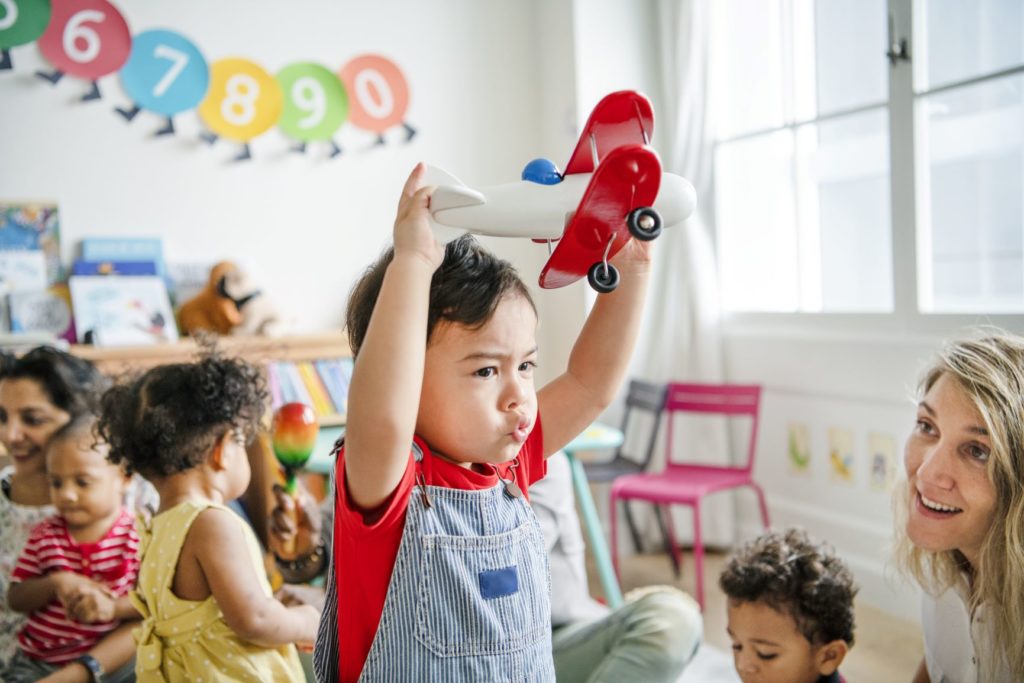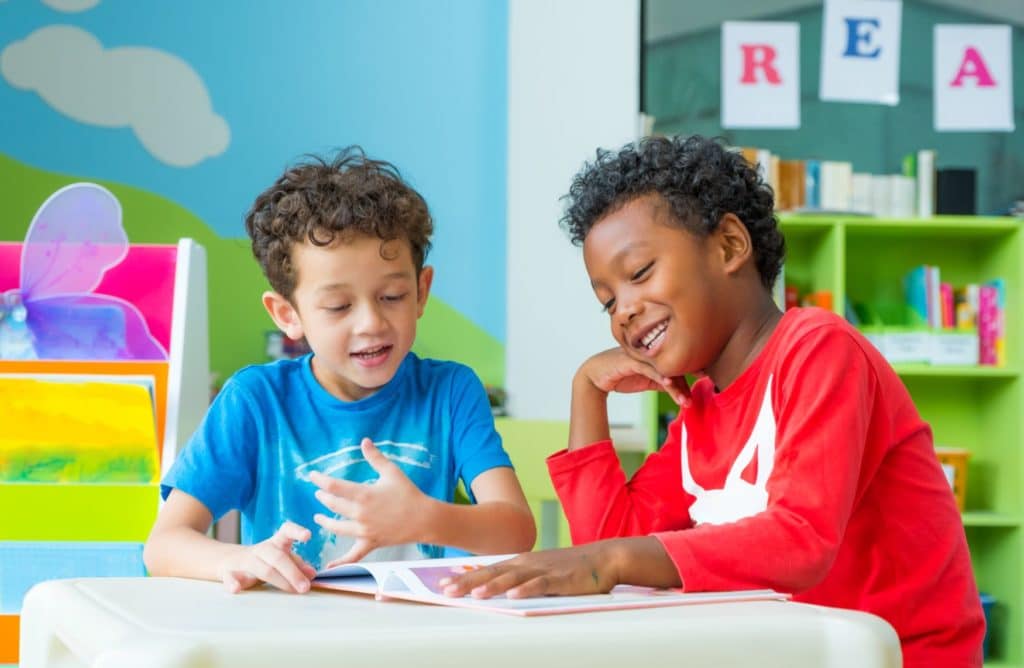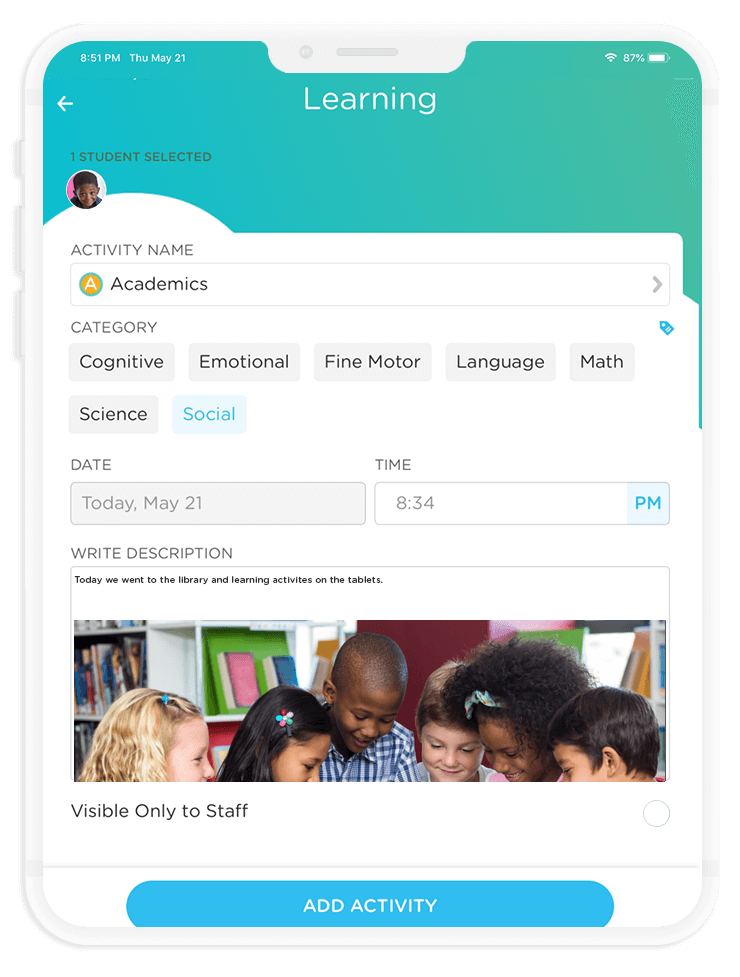
Parents love when their kids are excited to attend daycare, and staff morale and retention are boosted when kids in their care are glad to be there. One of the key ways to make your child care center a “happy place” for students and staff is by making learning fun.
Although some students — and even some educators — feel there is a dichotomy between learning and enjoyment, that’s not the case. Creating and delivering fun lessons helps kids get engaged in the learning process and develop a love for learning early in life.
Sometimes teaching can fall into a rut, but it doesn’t have to be difficult to shake things up and inject fun back into the classroom. In this post, I’ve compiled 12 tips you can use today to lift spirits, add novelty and create enthusiasm at your center.
Why Should Learning Be Fun?
Scientific evidence shows that when kids are having fun, their brains process information and form memories more efficiently. Neuroscientist Judy Willis says:
“When students are engaged and motivated and feel minimal stress, […] they achieve higher levels of cognition, make connections, and experience ‘aha’ moments. Such learning comes not from quiet classrooms and directed lectures, but from classrooms with an atmosphere of exuberant discovery (Kohn, 2004).”
Drawing on decades of research on education and cognition, Willis has identified three important factors for brain-based fun in learning: the brain is more receptive to information when it’s processing experiences that are novel, pleasurable and stress-free. Conversely, boredom, frustration and anxiety reduce the likelihood that the brain will retain what is taught.
She also explains that building positive associations with learning creates motivation for kids to continue applying themselves to that subject, rather than promoting discouragement and fear. This is especially important in sometimes anxiety-inducing subjects like math.
Convinced of the value of fun in education? Read on to learn how you can apply these brainy insights to your child care operation.
How to Make Your Child Care Center Fun

- Start With a Positive Atmosphere. Kids learn best when they are in a stimulating, harmonious environment that rewards exploration and allows them to focus on what they’re learning. Low staff-to-child ratios, organized learning centers, and a homelike atmosphere foster a setting where kids love to learn. Great staff contribute to the lively atmosphere by modeling their passion and dependability to children.
- Incorporate Physical Movement & Activity. Small kids are full of big energy! Giving them the chance to physically engage with lessons makes for interesting, memorable learning experiences — and uses up some of that energy to help them rest and focus later. Try:
- making up a dance with actions tied to the activity
- having kids walk between mini-stations with information and objects related to different aspects of the material
- taking a “wiggle break” halfway through a lesson.
- Reduce & Minimize Direct Instruction. Child development research shows that kids’ dominant form of learning is active exploration and construction of knowledge — passively absorbing information reduces motivation and integration. Try a more active, back-and-forth style that incorporates the Socratic Method. With a bit of adult guidance, giving kids the agency to reach answers themselves results in more solid learning and more robust connections between learning domains.
- Support Discovery and Exploration. Rewarding kids’ curiosity motivates them to learn, so it’s important to include time in lesson plans for kids to ask questions and explore connections. Building bridges between subjects reminds kids that what they’re learning is relevant, and welcoming their questions shows them that their interests matter. Another way to encourage critical thinking is to allow for social interactions in small groups during lessons. With others as a sounding board, kids can work through ideas with their peers and consider the applications of what they’ve learned.
- Give Kids Choices. Choices empower kids to discover more about themselves, their likes and dislikes, and how they choose to express their ideas. It can be as simple as letting kids pick what color to use in a drawing, or offering options for activities to complete a lesson. For instance, to summarize what they’ve learned, kids could choose between: writing a sentence or two, singing a song or drawing a picture. Choices like these help kids develop a sense of agency and pride in their learning, and strengthen the connection between their accomplishments and their identity.
Procare is here to help.
We know the business of child care. For more than 30 years we’ve been guiding child care professionals just like you to help stay connected and in control.
- Play Learning Games. Kids learn through play, and structured games are a great way to support the learning process. Developmentally-appropriate games keep kids challenged and engaged, and games have other benefits, like promoting strategic thinking, problem-solving, cooperation and self-control. Try playing games like:
- “Simon Says” to teach parts of the body (to younger children) or action verbs (for older kids).
- Scavenger hunts that can help kids learn to categorize objects by shape, color, purpose and more.
- A funny caption contest to get kids employing spelling and vocabulary in a fun context.
- Use Tech to Support Learning Experiences. It may be hard to drag kids away from watching YouTube on the iPad, but technology in the classroom doesn’t have to be a distraction. Kids love playing educational games, and a key advantage is that these tools can adjust to the skill level of each child for a more customized learning experience. Use of the Internet can also promote curiosity by providing answers on the fly for anything little ones may ask.
- Move the Classroom Outside. Moving the classroom outside can be a lot of fun, especially on a day with nice weather. Kids will appreciate the break from routine, as well as the natural light and fresh air they’ll get outdoors. The extra space affords the opportunity to incorporate some of the physical activity suggestions above, too.
- Appeal to Multiple Intelligences & Learning Styles. Some researchers believe that learning can be categorized into different styles, and that people display a preference for one or a few learning styles over others. These styles are: Visual, Aural, Physical, Verbal, Logical, Social, Independent and Nature-oriented. Designing lessons that cater to different learning styles allows kids to respond to the material in a way that suits them. It also promotes variety and novelty by engaging different sensory modalities, and supports relationships between the learning domains.
- Connect Abstract Lessons with Reality. “Will we ever use this in real life?” is a common question kids ask, and they’re right to ask it. After all, we educate kids to give them the skills they’ll need across their whole lives. Plus, understanding the purpose of learning is an important part of critical thinking. For engaged learners, it’s important to explain the “why” behind each lesson and connect it with the real world in a way that kids can understand. Create opportunities for valuable practical experiences by connecting lesson material to real life, for instance by showing how math can be used in cooking, or building writing skills by asking kids to write letters to friends.
- Foster and Encourage Participation. It’s natural that some kids are less interactive than others, but too often, the kids that speak out the most get the most attention from teachers, leaving the quieter kids on their own. Finding time to draw out engagement and feedback from each child, as well as providing alternative forms of participation for kids who need it, ensures that everyone in your classroom feels valued and appreciated.
- Plan a Field Trip. When possible, plan field trips that allow kids to experience new places and see new things that are connected to their education. Field trips provide some of the most memorable experiences in education, and give kids a glimpse of how the things they learn are used in their communities and beyond. Although it may not always be possible to physically go to another place, technology provides a valuable substitute for real-world field trips. For example, the free Google Arts and Culture app provides hundreds of in-depth VRand AR experiences for everything from national parks, to art museums, to 3D dinosaurs.
Make Your Child Care Center Fun with Procare Solutions

When your center is full of enthusiastic kids who love learning, you know you’re doing a good job. But if kids aren’t engaged, they won’t make as much progress, and parents will notice — so retention becomes a risk. For maximum engagement in the classroom, take advantage of Procare’s comprehensive child care management software.
For over 30 years, child care centers of all sizes have trusted Procare to help make providing great child care stress-free. Procare Solutions puts a suite of powerful tools at your fingertips, letting you plan lessons that meet the needs of kids, manage your fun classroom activities, and streamline operations so you can focus on what matters most.
Ready to boost engagement and make sure your center is where parents want their kids to be?



